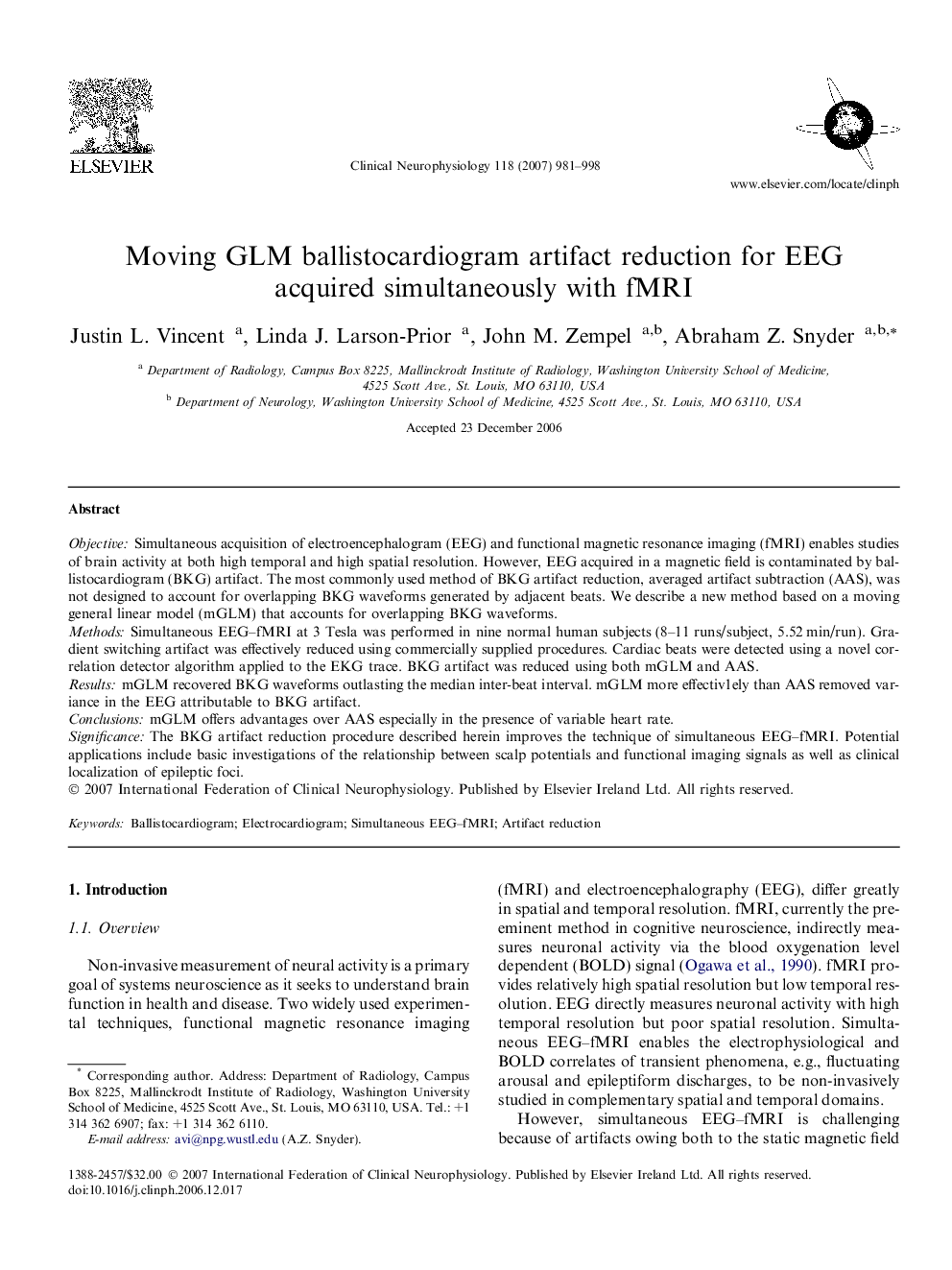| Article ID | Journal | Published Year | Pages | File Type |
|---|---|---|---|---|
| 3048520 | Clinical Neurophysiology | 2007 | 18 Pages |
ObjectiveSimultaneous acquisition of electroencephalogram (EEG) and functional magnetic resonance imaging (fMRI) enables studies of brain activity at both high temporal and high spatial resolution. However, EEG acquired in a magnetic field is contaminated by ballistocardiogram (BKG) artifact. The most commonly used method of BKG artifact reduction, averaged artifact subtraction (AAS), was not designed to account for overlapping BKG waveforms generated by adjacent beats. We describe a new method based on a moving general linear model (mGLM) that accounts for overlapping BKG waveforms.MethodsSimultaneous EEG–fMRI at 3 Tesla was performed in nine normal human subjects (8–11 runs/subject, 5.52 min/run). Gradient switching artifact was effectively reduced using commercially supplied procedures. Cardiac beats were detected using a novel correlation detector algorithm applied to the EKG trace. BKG artifact was reduced using both mGLM and AAS.ResultsmGLM recovered BKG waveforms outlasting the median inter-beat interval. mGLM more effectively than AAS removed variance in the EEG attributable to BKG artifact.ConclusionsmGLM offers advantages over AAS especially in the presence of variable heart rate.SignificanceThe BKG artifact reduction procedure described herein improves the technique of simultaneous EEG–fMRI. Potential applications include basic investigations of the relationship between scalp potentials and functional imaging signals as well as clinical localization of epileptic foci.
